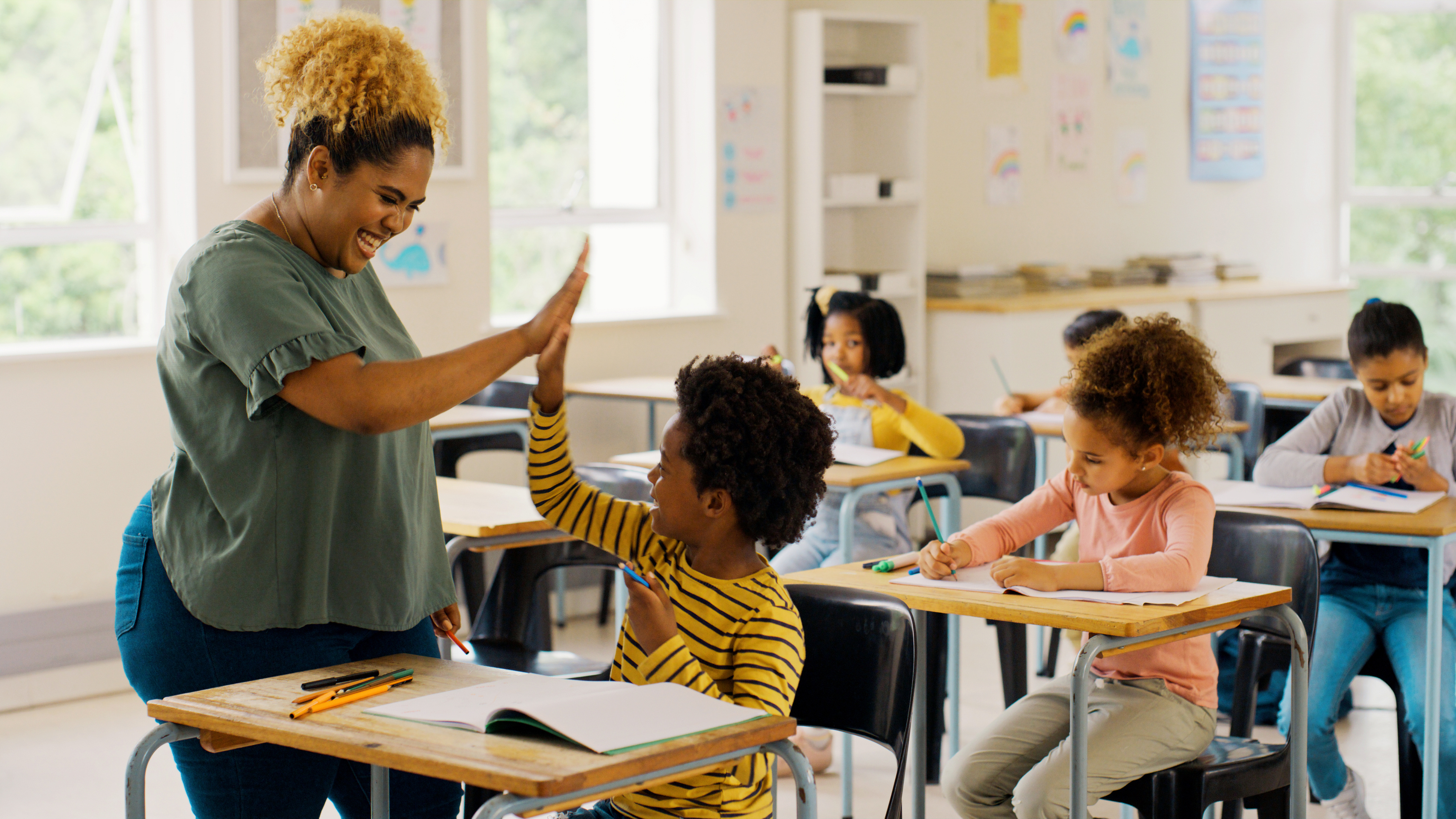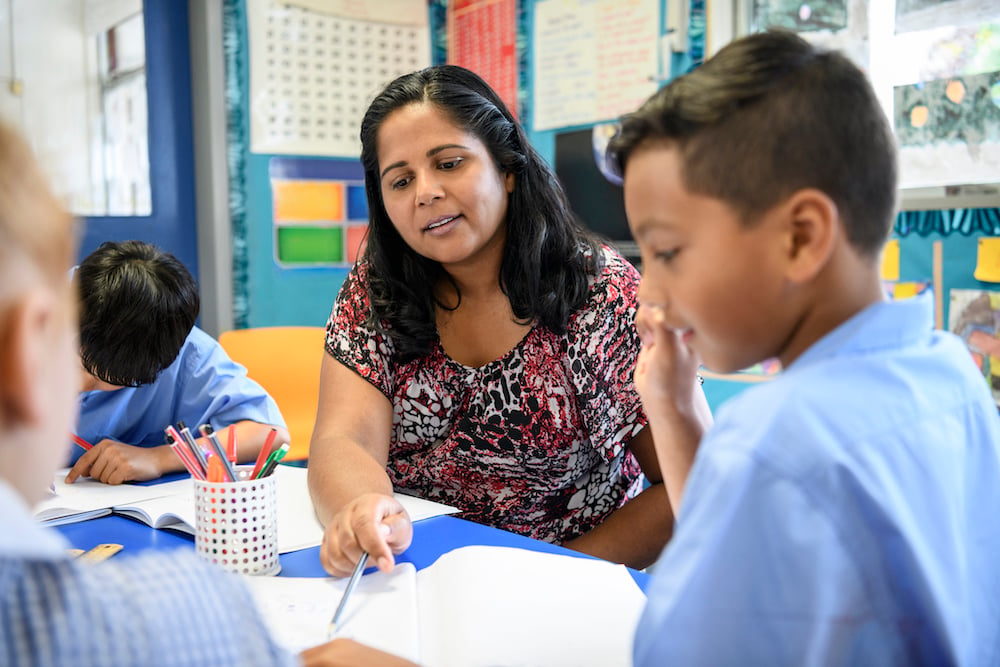As educators well know, each student brings unique strengths and challenges to the classroom. This diversity calls for instructional strategies that can adapt to meet individual needs—often, a one-size-fits-all approach just isn’t enough to reach all students.
That’s where Response to Intervention (RTI) comes in. RTI is an educational framework designed to identify and support students who may need extra academic or behavioral help. By organizing support into three distinct tiers, RTI provides a structured yet flexible approach that allows educators to offer the right level of support at the right time.
In this resource, we’ll break down each of the three RTI tiers, explaining how they work, who they’re for, and why they play such a critical role in helping all students reach their full potential.
Download Templates to Strengthen Your RTI Program
What is RTI?
RTI stands for Response to Intervention. It is a tiered framework of support used in educational settings to meet the needs of all students. One goal of RTI is early identification of students who are struggling so they receive support before falling too far behind. By assessing students frequently and adjusting the level of support, RTI helps ensure every student has the opportunity to succeed.
The effectiveness of RTI rests on the quality of general education instruction to set an appropriate foundation for all students. Only then can educators more accurately identify students who need additional support. These students receive interventions, or targeted, research-based strategies to meet a specific learning need.
RTI is one of many tiered models used in educational settings, often included under the umbrella of MTSS (multi-tiered system of supports) alongside PBIS and tiered frameworks for improving attendance and family engagement. A key element of these tiered models is data-based decision-making, where educators are expected to routinely review high-quality student data before making changes—instead of relying on limited or anecdotal evidence.
Understanding the 3 Tiers of RTI
The RTI model uses a structured, tiered approach to provide the right level of support for students. The three RTI tiers are designed to meet students where they are—whether they need only a little extra guidance, targeted small-group support, or more intensive one-on-one instruction.
Each tier is like a step in a staircase, offering progressively more focused and personalized help as students’ needs become more specific. All students begin on the ground floor (Tier 1) before some proceed to the second floor (Tier 2). Another few students then ascend to the third floor (Tier 3) after progressing through the previous two floors (Tiers 1 and 2).
The staircase visual helps convey that each tier is cumulative: Students in Tiers 2 and 3 receive interventions in addition to Tier 1 instruction. Students in Tier 3 receive all three levels of support. Students can be in different RTI tiers across subject areas. For example, a student may need Tier 2 support in math, but only Tier 1 support in English.
Tier 1: Universal, Core Instruction
In Tier 1, every student in a class gets the same high-quality instruction in a general classroom setting. Teachers use strategies that are proven by research to work for most students. They regularly monitor everyone’s progress with assessments and progress monitoring. The goal is to ensure that the majority of students succeed with standard instruction.
Teachers regularly collect data on all students’ progress and differentiate instruction as needed. Tier 1 is not one-size-fits-all: teachers tailor teaching methods, lesson content, and assessment strategies to meet the diverse needs, abilities, and learning styles of students in the same classroom.
Schools use data to determine if Tier 1 instruction is working as expected and to identify students who may be struggling even with differentiated instruction. These students may receive Tier 2 interventions.
Tier 2: Targeted, Small-Group Interventions
Students who need additional support beyond Tier 1 may receive Tier 2 interventions. These interventions are focused on specific skills or goals and often include small-group instruction. Students working on the same strategies may be grouped together to work with a teacher or interventionist.
Tier 2 supports generally last for a specific duration, after which educators assess the student’s progress and decide whether to continue, adjust, or intensify the intervention. These details are included in a student’s intervention plan, along with the ultimate goal of the intervention.
Tier 3: Intensive, Individualized Interventions
If a student still has learning gaps after receiving targeted Tier 2 support, they may receive Tier 3 interventions. Tier 3 is intensive, one-on-one support with interventions that are individualized to the student’s specific needs.
A Tier 3 intervention plan may involve specialized resources and close coordination with other educational staff, such as reading specialists or behavioral support personnel. Monitoring the student’s progress with high-quality, timely data is especially important in Tier 3.
Setting up intervention plans in Panorama Student Success is simple and strategic.
How Schools Can Implement RTI Effectively
Districts looking to roll out an RTI process should prioritize a successful implementation with strong leadership and quality support for educators.
Build a strong culture of data in your district. Reinforce the importance of referring to data before making decisions about intervention needs. Tools like Panorama Student Success keep track of district-wide data, helping educators quickly identify students in need and implement interventions.
Ensure effective communication and collaboration. Let teachers know who they can go to if they have questions. Help them roll out the new process, and expect some growing pains.
Build a strong RTI team. Look for educators with diverse roles and strengths across curriculum and intervention planning. Solutions-oriented individuals and those with an eye for data would be a good fit.
Administer effective professional development. Educators cannot get started if they do not know expectations and reasoning behind a new educational framework. Make sure the PD is worth their time with actionable strategies and valuable information.
Panorama Student Success: District Overview. Demo data displayed.
The Benefits of RTI Tiers for Student Success
By identifying students’ needs sooner rather than later, schools can prevent learning gaps from widening. Each RTI tier provides a layer of support that builds upon the previous one, allowing teachers to respond quickly to changes in student performance.
- Tier 1 galvanizes educators to prioritize high-quality instruction for all.
- Tier 2 offers strategic, evidence-based strategies for small groups.
- Tier 3 customizes intervention for an individual student with skill gaps.
Schools that implement RTI effectively should expect to see improved student outcomes, such as reduced special education referrals and greater academic performance. The effects can be traced across multiple years: For example, a school with a strong RTI program may see higher reading proficiency among elementary students, reducing the need for intensive intervention when they reach middle and high school.
These positive results highlight the power of the RTI model in promoting a school culture that supports every student’s path to success.
Conclusion
The RTI model’s three tiers—universal instruction, targeted small-group support, and intensive individualized intervention—form a framework that empowers schools to meet diverse student needs. By intervening early and adjusting support as needed, RTI helps keep students on track and reduces the chance of long-term academic challenges.
Administrators should be emboldened to tailor the RTI framework to fit their school’s unique needs. Remember the key elements of RTI as you plan your implementation, but consider what would work best for the students and educators in your school. Exploring RTI and understanding the three tiers is a valuable step toward creating an environment where every student has the support they need to thrive.




![3 Strategies for Building Effective Student Support Teams [+ Templates]](https://www.panoramaed.com/hubfs/IMG_3959.jpg)


.webp?width=666&height=640&name=Interventions-Progress-Monitoring-Toolkit%20(dragged).webp)